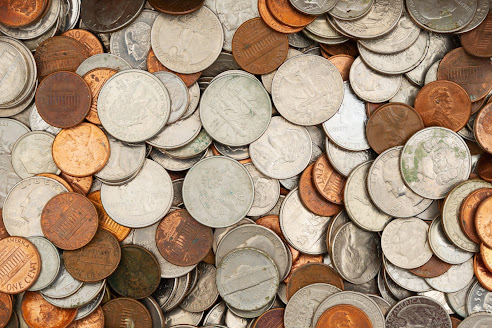The COVID-19 crisis has significantly slowed coin circulation in the country. Some people had trouble finding quarters to use at the laundromat, while businesses have posted signs asking customers to use exact change.
People want to hold on to more of their coins and cash, while businesses that feed supply by reintroducing coins with their deposits have fewer nickels and dimes to do so, according to Soques. The U.S. Mint and the Federal Reserve formed the U.S. Coin Task Force in July 2020 to help identify and promote strategies to address the country’s coin circulation issues.
The Federal Reserve’s Board of Governors assured the public that there is “an adequate overall amount of coins in the economy” on its website’s FAQ page.“But business and bank closures associated with the COVID-19 pandemic significantly disrupted normal circulation patterns for U.S. coins,” the FAQ continued.
The U.S. Mint upped its production of circulating coins in response to the shortage, making almost 3 billion more in 2020 compared to 2019. The country is also facing high inflation, with the consumer price index rising 7% year over year in December — its highest level since 1982. “Higher prices will also lead to higher money demand, since consumers need more cash and coin to conduct the same transactions,” Soques said.
Todd Martin, deputy chief of corporate communications at the U.S. Mint, said in an email that “coins aren’t circulating through the economy as quickly as we need them to, which means that sometimes coins are not readily available where they are needed.”
The overall money shortage that the pandemic created meant that cash and coins alike were in short supply. Many businesses had to change their cash handling practices to align with new safety protocols. However, now that a few years have passed, the national shortage has gradually improved. The Federal Reserve has an adequate amount of cash in the economy.
Despite the shortage improving and businesses no longer struggling as much as they once did, there is still an issue with circulation. During the pandemic, the public grew used to utilizing more sanitary ways of paying, such as the tap feature on many credit cards or debit cards. So, while there is not currently another coin shortage, poor circulation of cash continues to be an issue for many businesses.
How Did the Coin Shortage Affect Businesses?
While it may seem that many people don’t use cash at all anymore, cash is still the lifeblood of many businesses. During the pandemic, many small businesses were forced to turn away customers because they simply didn’t have change for cash transactions. As a result, many industries are still currently struggling with proper cash handling procedures.
Why Does a Coin Shortage Matter? Is There a Coin Shortage Update?
The coin shortage in America affected consumers, businesses, and the economy in ways that many weren’t prepared for. Many businesses that were used to being able to easily order change simply couldn’t anymore. With coins and cash in short supply, the economy couldn’t function as it should either.
So, while a quarter shortage or penny shortage may not seem like a big deal overall, it came with overarching consequences. Some of these unique challenges for businesses and the public alike include:
Difficulties paying bills: While many people pay bills over the phone or online, for those who are lower income, this can become quite expensive. Without being able to put cash in a bank and send checks, poorer people struggled to pay bills.
Businesses lost revenue: Many businesses – primarily small or local ones – had to turn away customers due to the change shortage. Less circulation in the economy: With fewer businesses and people depositing or withdrawing money, the economy’s circulation and production drastically dwindled.
Impacts those without a bank or cards: Many people don’t have bank accounts and are primarily paid in cash by employers. With a shortage, many people could not buy essentials without losing money. Source


No comments:
Post a Comment